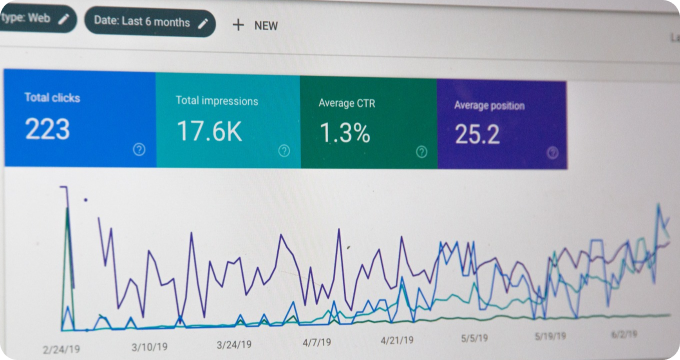How to Strategically Budget for Legal Discovery Software
- November 10, 2023
- 2 minutes
As we stride into the modern era, the legal world is rapidly evolving, thanks to the proliferation of technology. One such technology that has taken the legal industry by storm is Legal Discovery Software. This article aims to guide you through the process of strategically budgeting for such a software, providing insights that will lead to a judicious allocation of resources.
Let's start by understanding what Legal Discovery Software is all about. In simple terms, it refers to an automated tool that helps legal professionals manage and analyze electronically stored information (ESI) during the discovery phase of a lawsuit. It expedites the process of sifting through vast volumes of data, thus significantly reducing the time and effort involved in manual discovery. The software aids in the identification, preservation, collection, processing, review, and production of ESI.
The value proposition offered by Legal Discovery Software is considerable. The software provides an opportunity to streamline legal operations, optimize efficiency, and mitigate risk. However, acquiring it requires a strategic budgeting plan. The considerations involved in budgeting for this tool can be likened to the Heisenberg Uncertainty Principle in quantum mechanics. The principle asserts that the more precisely one property (for example, position) is measured, the less precisely the other (momentum) can be calculated. Similarly, budgeting for Legal Discovery Software is about striking a balance between cost, functionality, and scalability.
Before embarking on the budgeting process, it's crucial to comprehend the cost structure of Legal Discovery Software. The pricing models vary and may be based on subscription (monthly or annually), per case, data volume, or a combination. The cost often correlates with the complexity of the case and the volume of data.
A strategic budgeting plan starts with a detailed evaluation of your needs. Define the scope of requirements based on the nature and volume of cases your firm handles, the complexity of the ESI, and the size of your team. The Pareto Principle, or the 80/20 rule, is a useful framework in this context. It states that 80% of the effects come from 20% of the causes, implying that by identifying your most critical needs (top 20%), you can achieve the majority (80%) of your desired outcomes.
In terms of technology, consider factors such as ease of use, integration capabilities with existing systems, security features, and customer support. Choose software that offers a user-friendly interface and robust customer service. From a security perspective, the software should be compliant with regulations like ISO 27001 and SOC 2. Make sure that the software can integrate seamlessly with your existing system to avoid unnecessary disruption and additional costs.
When it comes to scalability, consider both your current and future needs. Is your law firm planning to expand? Will you be handling cases with larger volumes of data or more complexity in the future? Here, the concept of inherent risk vs. control risk in auditing applies. Inherent risk is the risk present before any control measures are taken, while control risk is the risk that remains after control measures are implemented. In the context of budgeting for Legal Discovery Software, the inherent risk is the potential for skyrocketing costs if your needs change or grow. Intelligent budgeting can help you control this risk.
Lastly, the implementation of Legal Discovery Software will likely require some training for your team. This is an often-overlooked cost that should be factored into your budget. The Mentoring Mathematical Model, which applies the principles of differential equations to human learning, suggests that the learning curve for new technology is steep at first but levels off over time. Therefore, it's prudent to allocate some funds for initial training sessions to expedite the process and maximize returns from the investment.
In conclusion, budgeting for Legal Discovery Software is a strategic task that requires a deep understanding of your needs, a clear grasp of the software's cost structure, and a forward-looking perspective on scalability. By applying principles from various disciplines - quantum mechanics, economics, auditing, and mathematics - you can devise a budgeting plan that helps maximize return on investment and minimizes risk.
Learn More
Unleash the power of knowledge and elevate your legal prowess by delving deeper into our enlightening blog posts on legal discovery software. For an unbiased, comprehensive view, the reader is encouraged to explore our meticulously curated rankings of the Best Legal Discovery Software.
Popular Posts
-
 10 Compelling Reasons Why Your Law Firm Needs Legal Discovery Software
10 Compelling Reasons Why Your Law Firm Needs Legal Discovery Software
-
 Debunking the Top 10 Myths About Legal Discovery Software
Debunking the Top 10 Myths About Legal Discovery Software
-
 8 Things I Wish I'd Known About Legal Discovery Software Before Implementing It
8 Things I Wish I'd Known About Legal Discovery Software Before Implementing It
-
 What are Legal Discovery Software Solutions and How Do They Work?
What are Legal Discovery Software Solutions and How Do They Work?
-
 Ask These Questions to a Legal Discovery Software Provider to Choose the Right One for You
Ask These Questions to a Legal Discovery Software Provider to Choose the Right One for You






